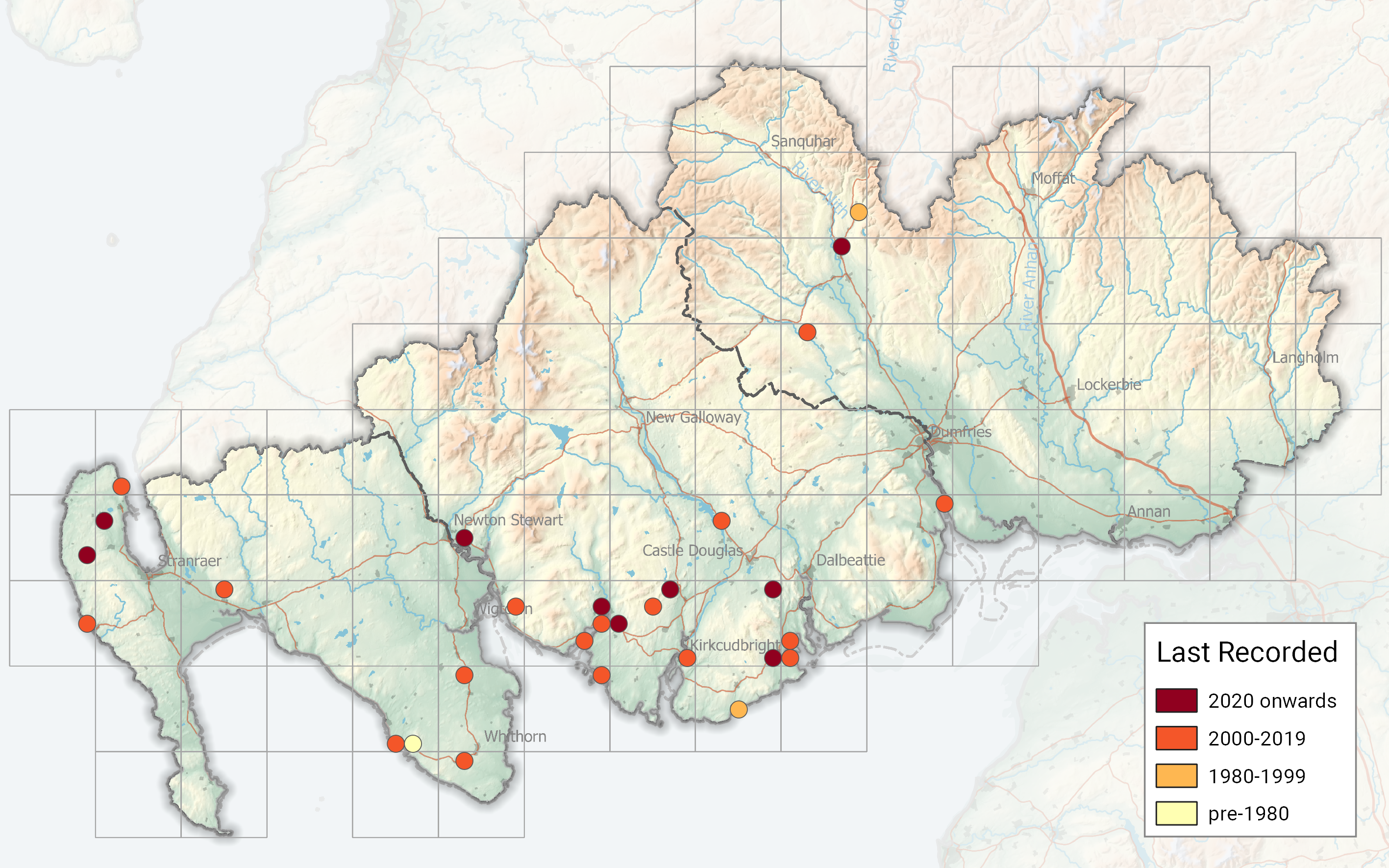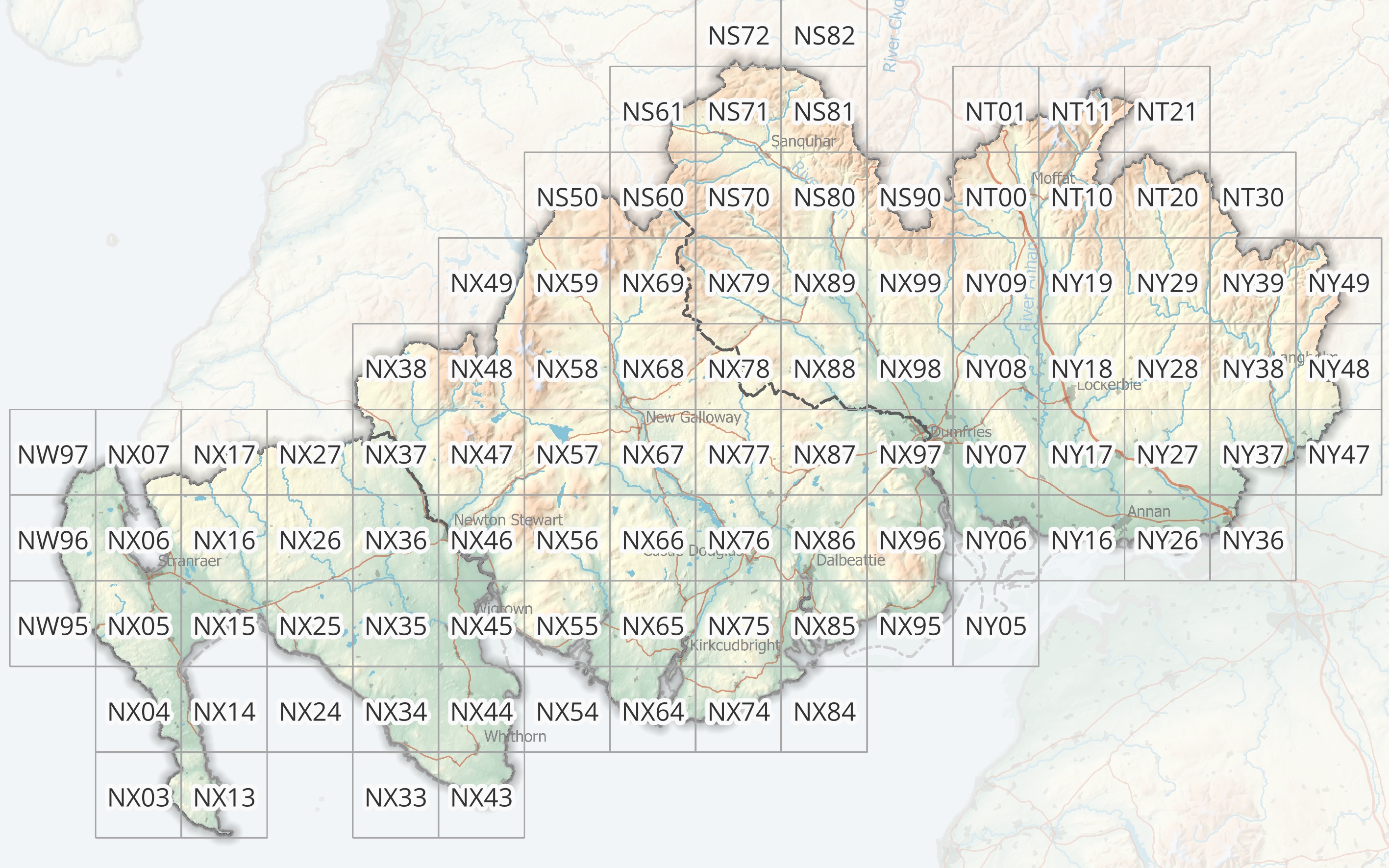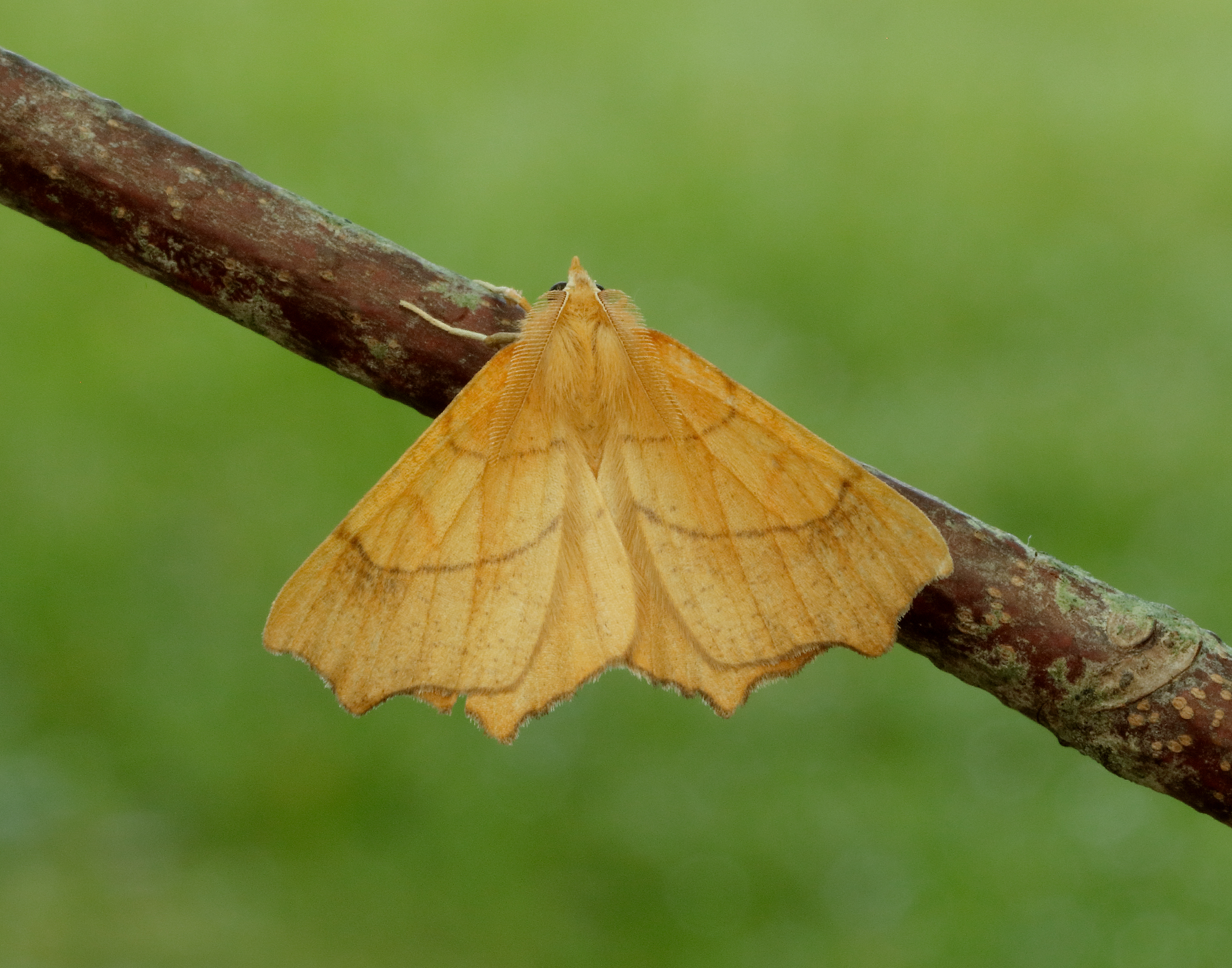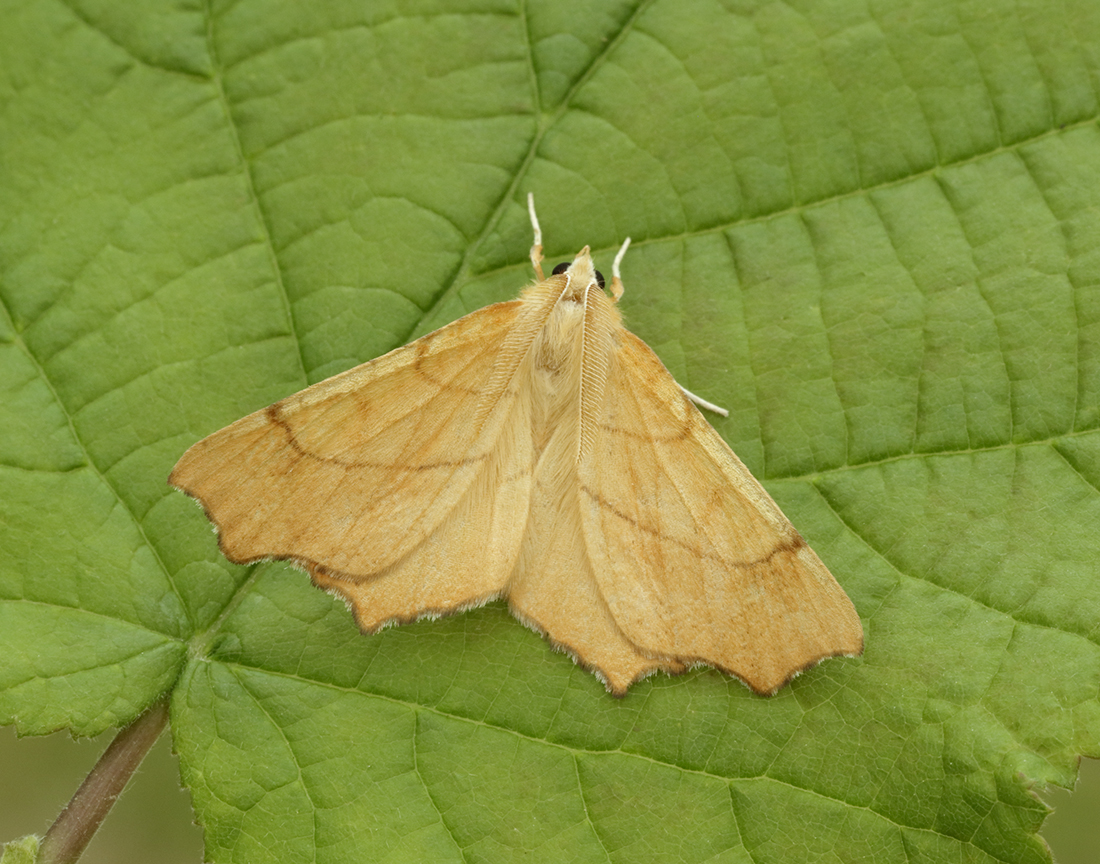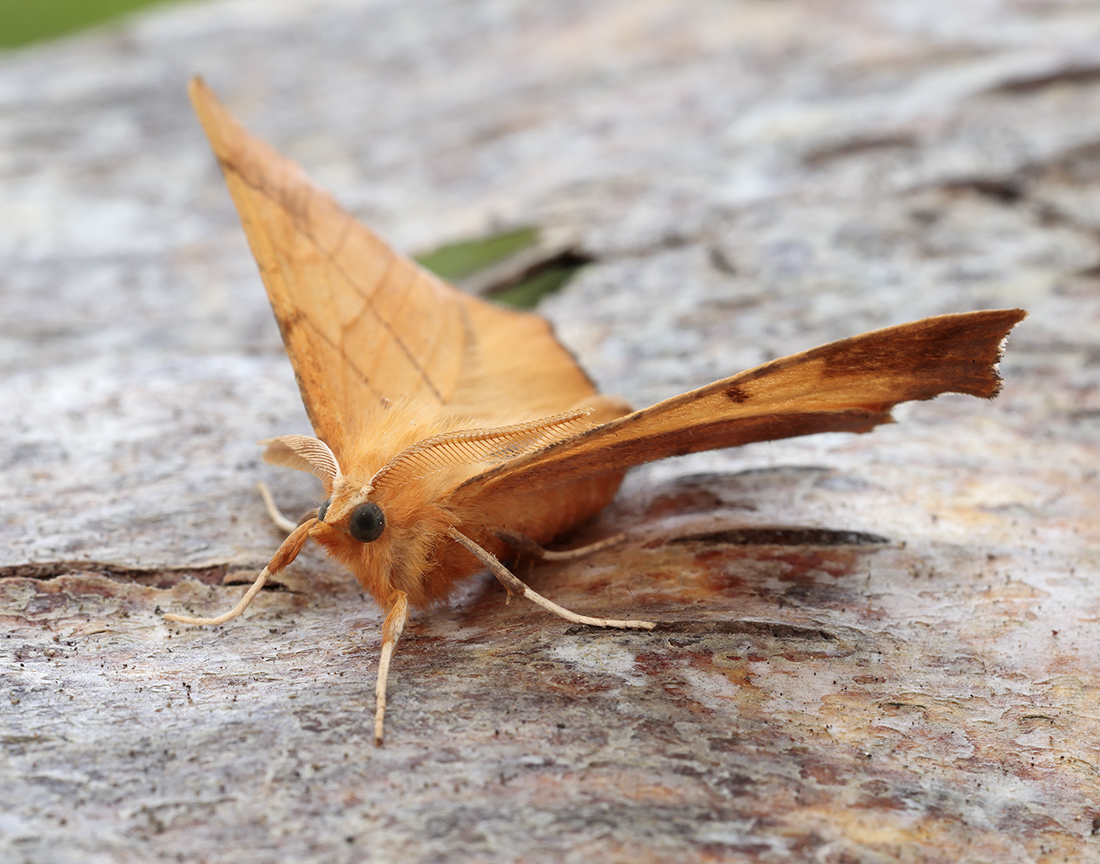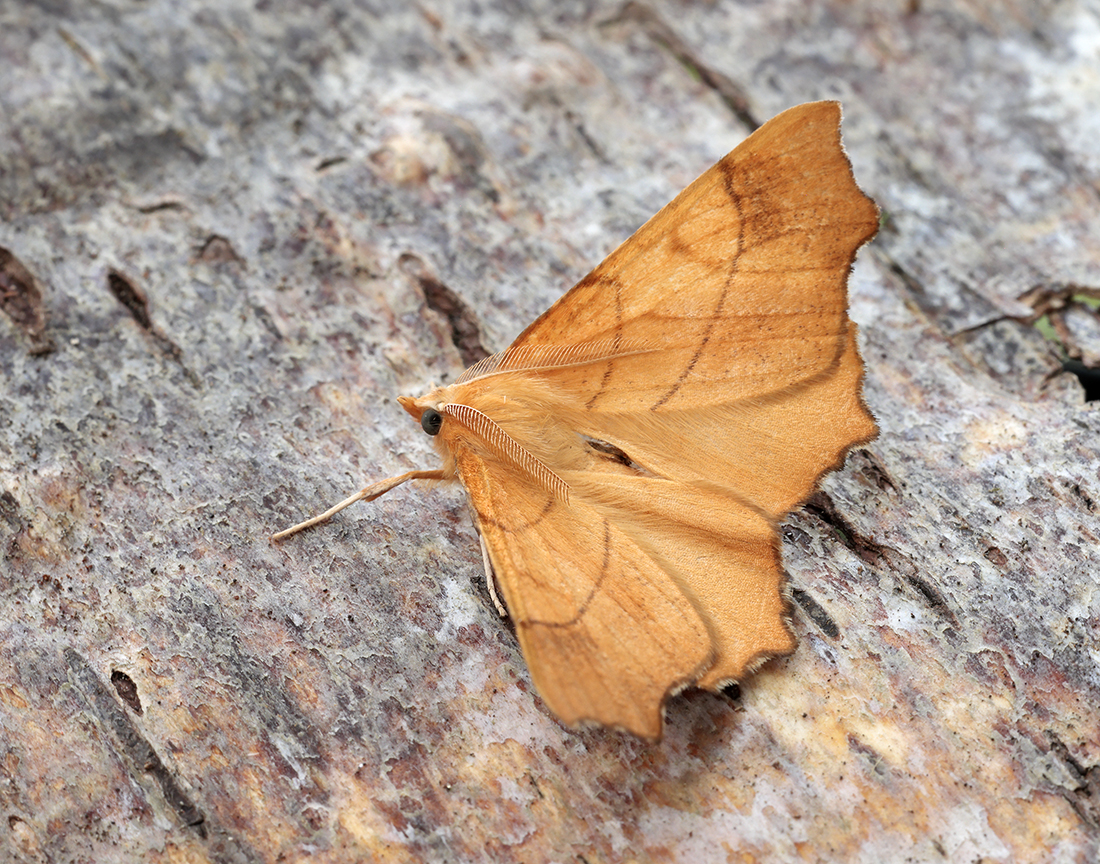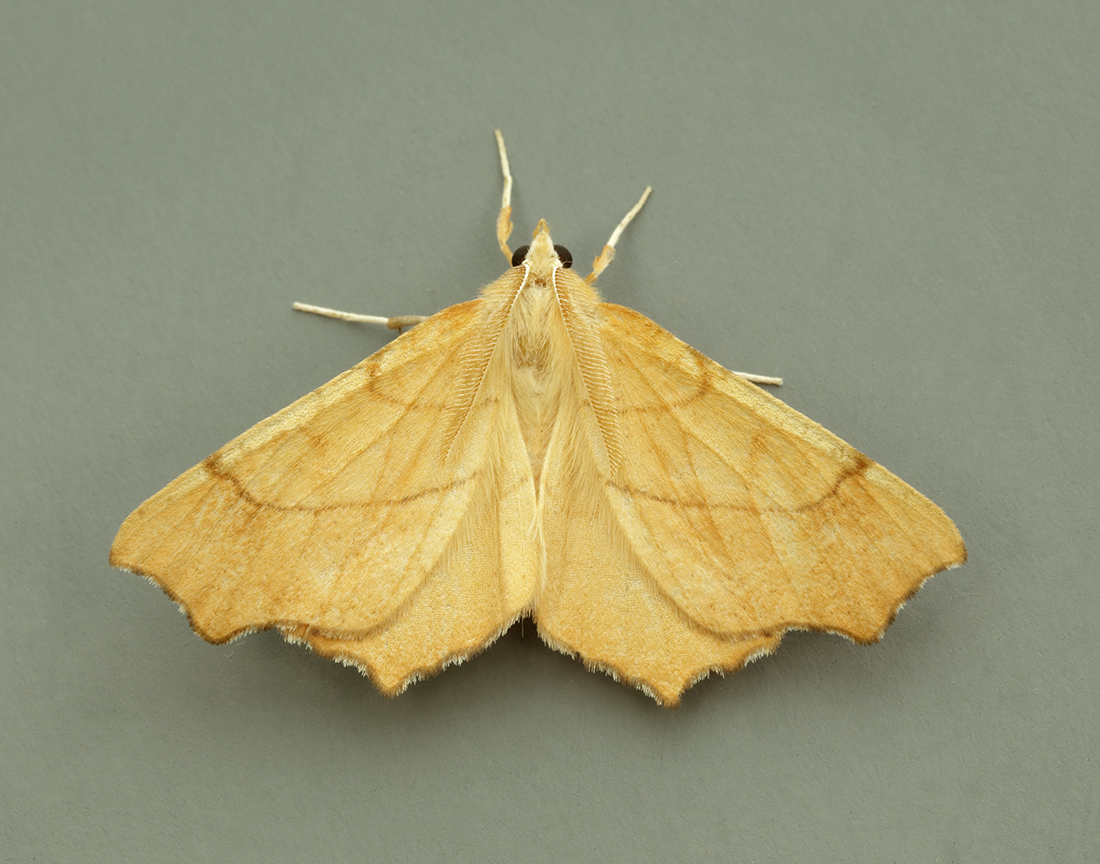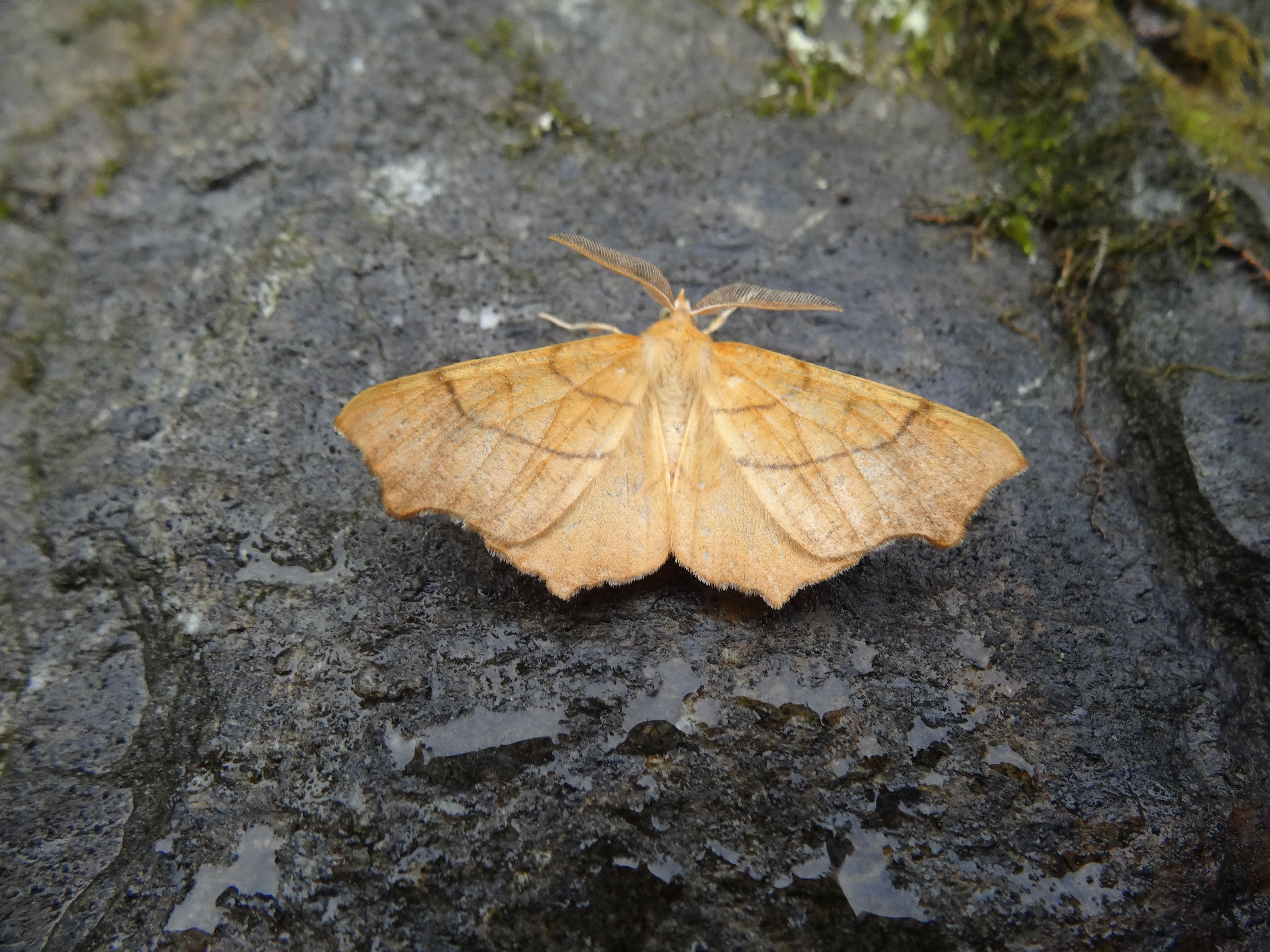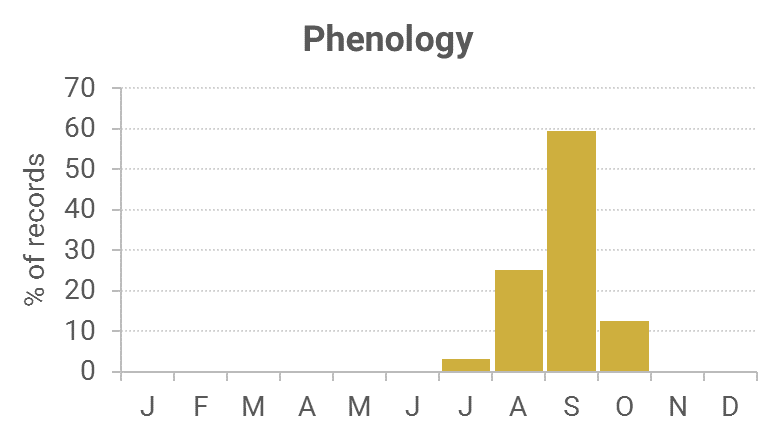Identification
Great care is needed in identifying this very scarce species from other thorns. It is very similar to September Thorn, but this species holds it wings at a lower angle than other thorns when at rest. Also, outer cross-line on the forewing is kinked at the costa, with the inner one having a more pronounced angle at the costa. A quality picture or specimen required for record acceptance.
Recording method
Comes to light.
Life cycle
One generation. Overwinters as an egg. Pupates among leaves of the foodplants, mainly oaks.
Larval foodplants
Pedunculate Oak, limes and Small-leaved Elm.
Habitat
Woodland and parkland.
History
First recorded for Dumfries and Galloway in 1862 for VC73 at Terregles by Lennon who said it was ‘not common’, in 1895 for VC74 at Monreith by Maxwell who caught ‘six specimens flying at dusk’ but not until 1999 for VC72 at Durisdeer by Caroline Allan.

